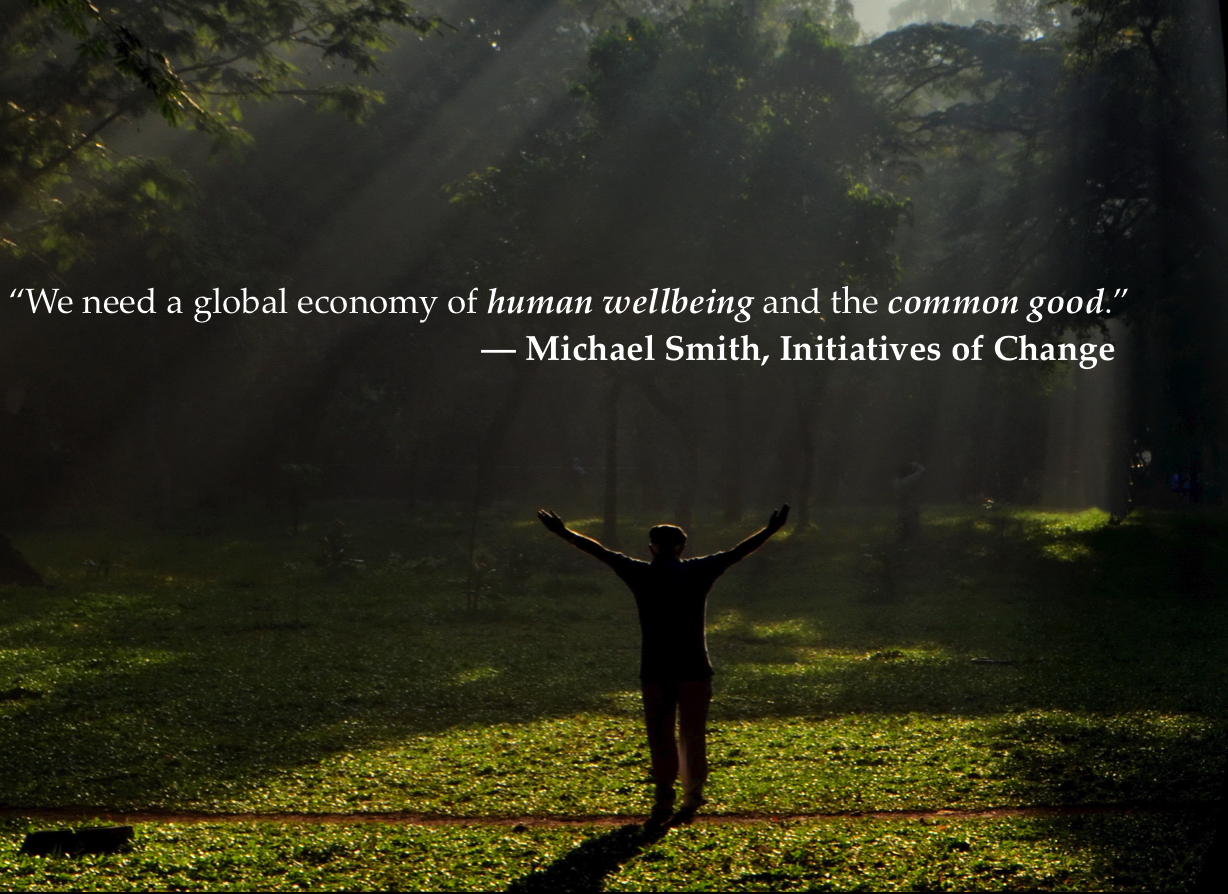These Videos are from talks given at the “The Economics of Happiness: Creating a More Equitable World” event organised by Initiatives of Change and Local Futures.
The session was based around the ideas of Helena Norberg-Hodge that designing an economy on a human scale can bring wealth, happiness and prosperity in an ecological way. She talked of the steps local, national and international, to getting there. Continue reading
Creating peace
A new narrative for the Economics of Happiness
London 14th September 2016, Initiatives of Change center:
What if human well-being didn’t have to be at the expense of the environment? What if we could simultaneously increase genuine prosperity,reduce social inequality, and tackle climate change? With some simple economic shifts, all this becomes possible. That’s because so many of our current crises—financial, social and ecological—are linked to the scale of the economy. Localisation is a solution-multiplier that systemically reduces economic scale, creating benefits that ripple throughout society. In this day-long seminar, her talk highlighted human-scale economies and the steps—at the community, national, and international levels—that can bring us there.
READ MORE
Inside peace, the documentary film
The Inside Peace documentary follows a group of inmates doing hard time in a Texas prison as they embark on a journey of personal discovery while struggling with society’s roadblocks and dangers.
“These stories bleed through Inside Peace, and they are crucial to it, but they’re only part of what the film is about. The men manage to take the message to heart that they have value as people – no simple lesson… This is where, for the viewer, the awe comes in.”
—Peace Behind Barbed Wire by Robert Koehler, Huffington Post.
About Inside Peace
Criminal offenders with lives marked by generations of violence, addiction, and poor social conditions attend the Peace Class in a Texas prison where they struggle to discover their humanity, improve their outlook on life and rebuild their lives from the inside out. Four years in the making, Inside Peace is a feature documentary that focuses on several compelling characters who were incarcerated at Dominguez State Jail in San Antonio, Texas. There, they embarked on a journey of change by enrolling in the Peace Class, one of the few self-improvement programs offered in prisons across the country that are not faith-based, but instead concentrates on the individual’s inner strength and self-worth.
Soil, soul and society. Connecting back to nature
Humanity needs to embrace a new Trinty. Opinion from Satish Kumar
Read more in this article from the British Guardian.
Now is our time to…
We are always in the moment now. And in this moment is our time to be in joy and to be in peace. A lovely inspiring video from Words of Peace. Thanks to Friedensforum for posting.
Beta version of our Peace Bank released
We have set up a Peace Bank facility to help fulfill our mission of encouraging and supporting more activities to promote peace in the world . We have just released a beta version of our Peace Bank. The Bank holds details of organizations working to promote peace, and is under continuous development and update.
The Peace Bank also collects stories to inspire and inform us how people and their organisations came to build foundations for peace in different ways. In a short while we will publish stories you will be able to retrieve using a search function. In the meantime we have some demonstration stories here.
Peace Story: Post-WW2 reconciliation

Frank Buchman
TIME AND PLACE: CAUX, Switzerland post WW2
THE PEOPLE INVOLVED: Frank ND Buchman was the initiator of Moral Re-Armament, now known as Initiatives of Change.
SITUATION: Buchman returned to Europe after WW2, conscious that lasting worldwide peace could only be established on the basis of a change in personal and public relationships. At this time any contact with the Germans was extremely difficult.
WHAT HAPPENED: Moral Re armament opened an international conference centre in Caux, Switzerland, made possible through the generosity and hard work of hundreds of Swiss citizens. Over the next four years more than 3,000 Germans and 2,000 French came to Caux, and their

CAUX Conference Center
encounters became the basis of a massive development in reconciliation and reconstruction.
END RESULTS: Buchman was later decorated by both the German and French governments for his contribution to European reconciliation. The story of one them, Resistance leader Madame Irène Laure, is told on video – and is also available as a book. The conferences at Caux, and similar ones at Mackinac Island in the United States, achieved further public recognition through several other major contributions to international developments in the post-war years, notably the part played in the reconciliation of Japan with her South-East Asian neighbours, and in the achievement of independence by several African countries without major bloodshed. By the 1950s, casts of plays presenting MRA’s ideas were travelling all over the world.
FOR MORE INFORMATION
See the IOFC website under history
Excerpt from “Splitting the Arrow”
In his book “Splitting the Arrow” peace ambassador Prem Rawat explains the three levels of conflict:
- The first is between two countries.
- The second is between two people.
- The third is the conflict that rages with an individual.
He goes on to say….
The first step is for individuals to nurture and practice peace in their own hearts. When enough individuals can do this, then the external wars can come to an end.
